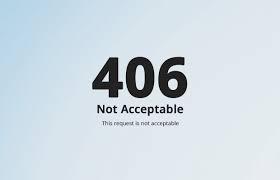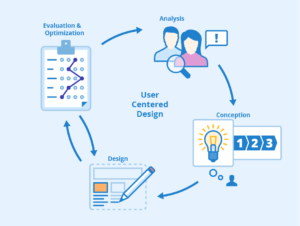Error Decoding the 406 Not Acceptable Error: Causes and Solutions – Your Comprehensive Guide

Error Decoding the 406 Not Acceptable Error: Causes and Solutions - Your Comprehensive Guide
Introduction
In the realm of the internet, encountering error codes is a common occurrence that can leave users puzzled. Among these, the “406 Not Acceptable” error stands out as a stumbling block that can hinder your access to certain resources. In this comprehensive guide, we’ll unravel the mysteries of the 406 error, explore its underlying reasons, and provide you with a step-by-step guide to effectively troubleshoot and resolve it.
Understanding the 406 Not Acceptable Error
The “406 Not Acceptable” error is an HTTP status code that indicates that the server cannot produce a response matching the list of acceptable values defined in the request’s headers. In simpler terms, the content format you’re seeking is not available or supported by the server.
Common Reasons for the 406 Error
- Unsuitable Content Format:The primary reason for a 406 error is the server’s inability to provide the content in a format that matches the user’s specified preferences or requirements.
- Missing or Invalid Headers:If the headers in the request do not clearly specify the acceptable content formats, the server may respond with a 406 error.
- Content Negotiation Issues:Content negotiation is the process by which the server selects an appropriate response format. If this process fails, a 406 error can occur.
- Unsupported Languages:If the server cannot provide content in the user’s preferred language, it might return a 406 error.
Resolving the 406 Not Acceptable Error: Step-by-Step Guide
- Check Request Headers:Review the headers in your request and ensure that the “Accept” header accurately specifies the content formats you can accept.
- Use Standard Accept Headers:Utilize standardized media type names in the “Accept” header to ensure compatibility with the server’s content offerings.
- Update Language Preferences:If language negotiation is a factor, verify that your request includes the correct language preference codes.
- Specify Content Types:If you’re a developer making API requests, ensure that your request headers include the appropriate “Accept” value for the response content type.
- Try a Different Format:If you’re encountering a 406 error while accessing a specific type of content, try accessing a different format (if available) to see if it’s accessible.
- Clear Cache and Cookies:Cached data can sometimes interfere with content negotiation. Clear your browser’s cache and cookies, then attempt to access the content again.
- Check Server Documentation:If you’re a website owner, review your server’s documentation to understand its supported content formats and negotiation mechanisms.
- Inspect API Documentation:If you’re working with APIs, consult the API documentation to ensure you’re using the correct “Accept” header values for desired content types.
- Contact Support:If you’ve followed all steps and are still encountering the error, reach out to the website’s support team for assistance.
Conclusion
Facing the 406 Not Acceptable error might seem like a roadblock, but with a clear understanding of its origins and solutions, you’re now equipped to navigate it successfully. Whether it’s an issue of content format, headers, or language preferences, this guide empowers you to traverse the complexities of web content negotiation confidently. Remember, persistence and a methodical approach are key to resolving the 406 error and enjoying a seamless online experience tailored to your preferences.
For More Related Articles Browse Our Website Blogster.pk
For social Connection You can also Visit and follow our Social media Platforms
Facebook , Instagram, Linkedin, Pinterest, Quora, Twitter, Youtube.





